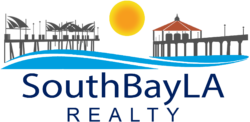1. Credit Scores
Your credit score is one factor that can affect your interest rate. In general, consumers with higher credit scores receive lower interest rates than consumers with lower credit scores. Lenders use your credit scores to predict how reliable you’ll be in paying your loan. Credit scores are calculated based on the information in your credit report, which shows information about your credit history, including your loans, credit cards, and payment history.
Before you start mortgage shopping, your first step should be to check your credit, and review your credit reports for errors. If you find any errors, dispute them with the credit reporting company. An error on your credit report can lead to a lower score, which can prevent you from qualifying for better loan rates and terms. It can take some time to resolve errors on your credit reports, so check your credit early in the process.
You can also experiment with the tool to see how you might save more on your mortgage interest rate with higher credit scores. Learn more about things you can do to raise your credit scores.
2. Home Location
Many lenders offer slightly different interest rates depending on what state you live in. To get the most accurate rates using our Explore Interest Rates tool, you’ll need to put in your state, and depending on your loan amount and loan type, your county as well.
Different lending institutions can offer different loan products and rates. Regardless of whether you are looking to buy in a rural or urban area, talking to multiple lenders will help you understand all of the options available to you.
3. Home Price & Loan Amount
Homebuyers can pay higher interest rates on loans that are particularly small or large. The amount you’ll need to borrow for your mortgage loan is the home price plus closing costs minus your down payment. Depending on your circumstances or mortgage loan type, your closing costs and mortgage insurance may be included in the amount of your mortgage loan, too.
If you’ve already started shopping for homes, you may have an idea of the price range of the home you hope to buy. If you’re just getting started, real estate websites can help you get a sense of typical prices in the neighborhoods you’re interested in.
4. Down Payment
In general, a larger down payment means a lower interest rate, because lenders see a lower level of risk when you have more stake in the property. So if you can comfortably put 20 percent or more down, do it—you’ll usually get a lower interest rate.
If you cannot make a down payment of 20 percent or more, lenders will usually require you to purchase mortgage insurance, sometimes known as private mortgage insurance (PMI). Mortgage insurance, which protects the lender in the event a borrower stops paying their loan, adds to the overall cost of your monthly mortgage loan payment.
As you explore potential interest rates, you may find that you could be offered a slightly lower interest rate with a down payment just under 20 percent, compared with one of 20 percent or higher. That’s because you’re paying mortgage insurance—which lowers the risk for your lender.
It’s important to keep in mind the overall cost of a mortgage. The larger the down payment, the lower the overall cost to borrow. Getting a lower interest rate can save you money over time. But even if you find you’ll get a slightly lower interest rate with a down payment less than 20 percent, your total cost to borrow will likely be greater since you’ll need to make the additional monthly mortgage insurance payments. That’s why it’s important to look at your total cost to borrow, rather than just the interest rate.
5. Loan Term
The term, or duration, of your loan is how long you have to repay the loan. In general, shorter term loans have lower interest rates and lower overall costs, but higher monthly payments. A lot depends on the specifics—exactly how much lower the amount you’ll pay in interest and how much higher the monthly payments could be depends on the length of the loans you’re looking at as well as the interest rate.
6. Interest Rate Type
Interest rates come in two basic types: fixed and adjustable. Fixed interest rates don’t change over time. Adjustable rates may have an initial fixed period, after which they go up or down each period based on the market.
Your initial interest rate may be lower with an adjustable-rate loan than with a fixed rate loan, but that rate might increase significantly later on.
7. Loan Type
There are several broad categories of mortgage loans, such as conventional, FHA, USDA, and VA loans. Lenders decide which products to offer, and loan types have different eligibility requirements. Rates can be significantly different depending on what loan type you choose. Talking to multiple lenders can help you better understand all of the options available to you.
Source: Consumer Financial Protection Bureau

 By submitting information, I am providing my express written consent to be contacted by representatives of this website through a live agent, artificial or prerecorded voice, and automated SMS text at my residential or cellular number, dialed manually or by autodialer, by email, and mail.
By submitting information, I am providing my express written consent to be contacted by representatives of this website through a live agent, artificial or prerecorded voice, and automated SMS text at my residential or cellular number, dialed manually or by autodialer, by email, and mail.

